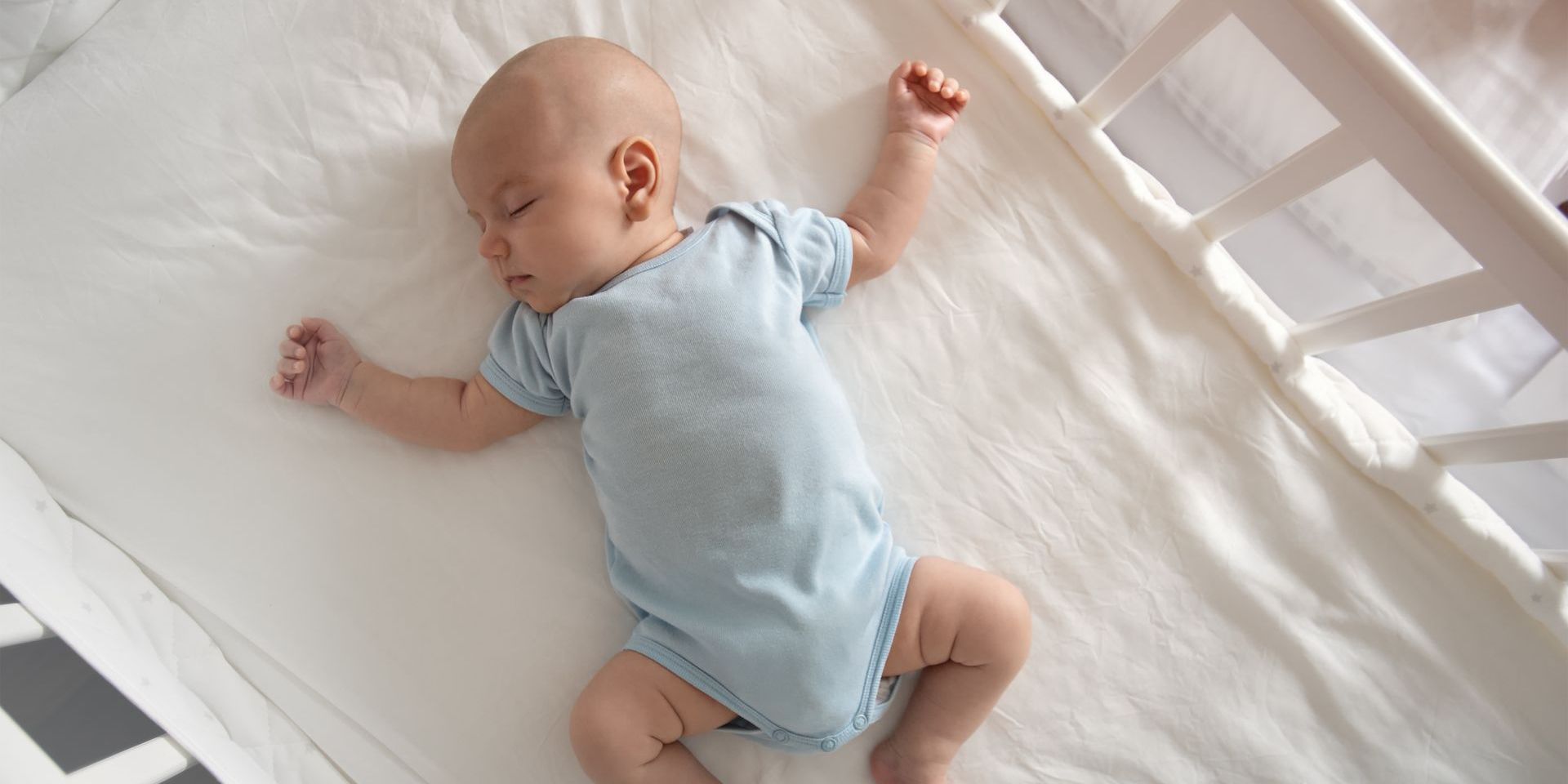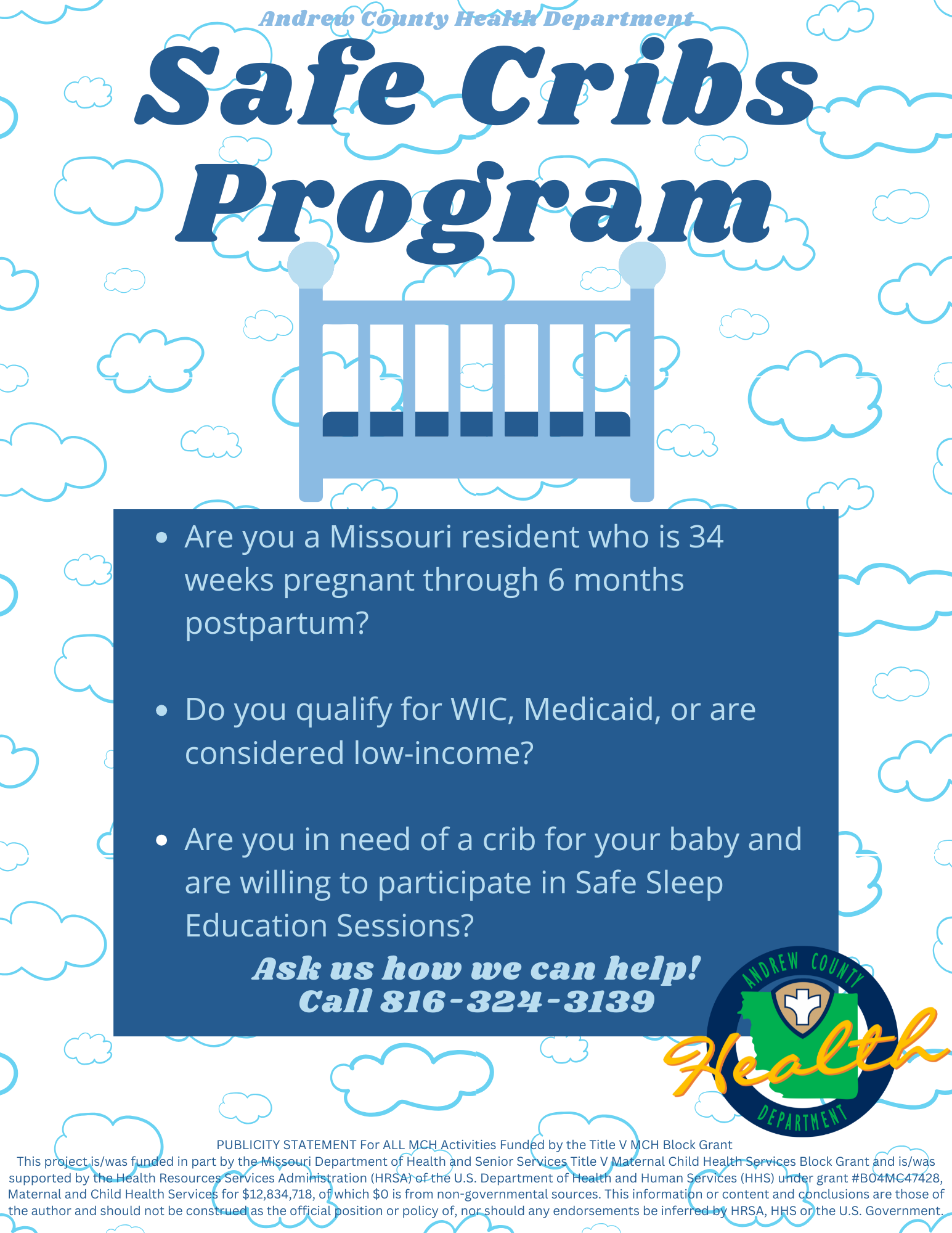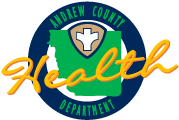Crib Safety
info@andrewcountyhealth.com

Keeping Your Baby Safe While They Sleep
Ensuring your baby sleeps safely is one of the most important steps in preventing accidents. Follow these essential guidelines to create a safe sleeping environment for your little one:
A - Alone
Always place your baby in their crib alone. Babies should never sleep on adult beds, sofas, recliners, or chairs, whether alone or with others. Sleeping with others increases the risk of unintentional suffocation, which is the leading cause of injury-related death in infants under 1 year old. In fact, nearly three-quarters of suffocation deaths among babies occur due to accidental suffocation or strangulation in bed.
While it may be tempting to decorate the crib with stuffed animals, blankets, or bumper pads, these items can be hazardous. They pose risks of suffocation, strangulation, and entrapment. Keep the crib free of soft objects, pillows, or comforters.
B - Back
Always place your baby on their back to sleep. This simple step significantly reduces the risk of Sudden Infant Death Syndrome (SIDS). Babies do not need extra support, such as rolled blankets or commercial devices, to keep them on their backs.
Once your baby is able to roll over independently, you don’t need to reposition them. However, always begin sleep with your baby on their back for maximum safety.
C - Crib
Make sure your crib meets current safety standards set by the Consumer Product Safety Commission (CPSC) and the Juvenile Products Manufacturers Association (JPMA). Always verify that the crib has all the necessary parts and that it is in good condition. Avoid cribs with broken slats or missing hardware.
Be cautious of older cribs, as the paint may contain lead, which poses a serious health risk. Cribs manufactured after 2013 are required to meet all the current hardware guidelines and safety standards. Always check that the crib is safe before setting it up for your baby.
By following these ABCs of crib safety, you can help create a safe and secure sleeping environment for your little one.
Safety Considerations for Your Baby’s Crib
- Keep the Crib Away from Windows: Place the crib in a location away from direct sunlight or drafts, as these can make your baby uncomfortable. Avoid placing the crib near a radiator to prevent overheating.
- Use a Wearable Blanket: On chilly nights, consider using a sleep sack or wearable blanket to keep your baby warm, instead of heavy blankets which can pose a suffocation risk.
- Keep Strings and Cords Out of Reach: Ensure that any strings from blinds or curtains are out of reach to prevent the risk of strangulation. Also, keep any cords from baby monitors at least 3 feet away from the crib.
- Transition to a Bed: Once your child reaches about 3 feet in height, it's time to transition them to a bed. If you're concerned about them falling out, start with the mattress on the floor for extra safety.
- Check for Recalls: If you’re using a second-hand crib, make sure to check for any recalls at www.recalls.gov to ensure it’s safe.
- Learn CPR: As a new parent, learning CPR should be a top priority. It provides peace of mind and prepares you to act in an emergency, which is priceless for any parent.
By following these safety tips, you can create a secure and comfortable sleep space for your little one.
Ensure Your Baby's Safety with Proper Crib Practices
By following these simple crib safety guidelines, you can provide a secure and peaceful sleep environment for your baby. Remember, a safe crib is key to reducing the risk of accidents and ensuring your baby's well-being during their earliest stages of life.

Additional Resources
Need Assistance?
Have questions or need guidance? Our team is here to help! Reach out today and let us support your health and wellness journey.
Contact Us
info@andrewcountyhealth.com
106 North 5th Street, Savannah, Missouri 64485, USA
- Mon - Fri
- -
- Sat - Sun
- Closed



